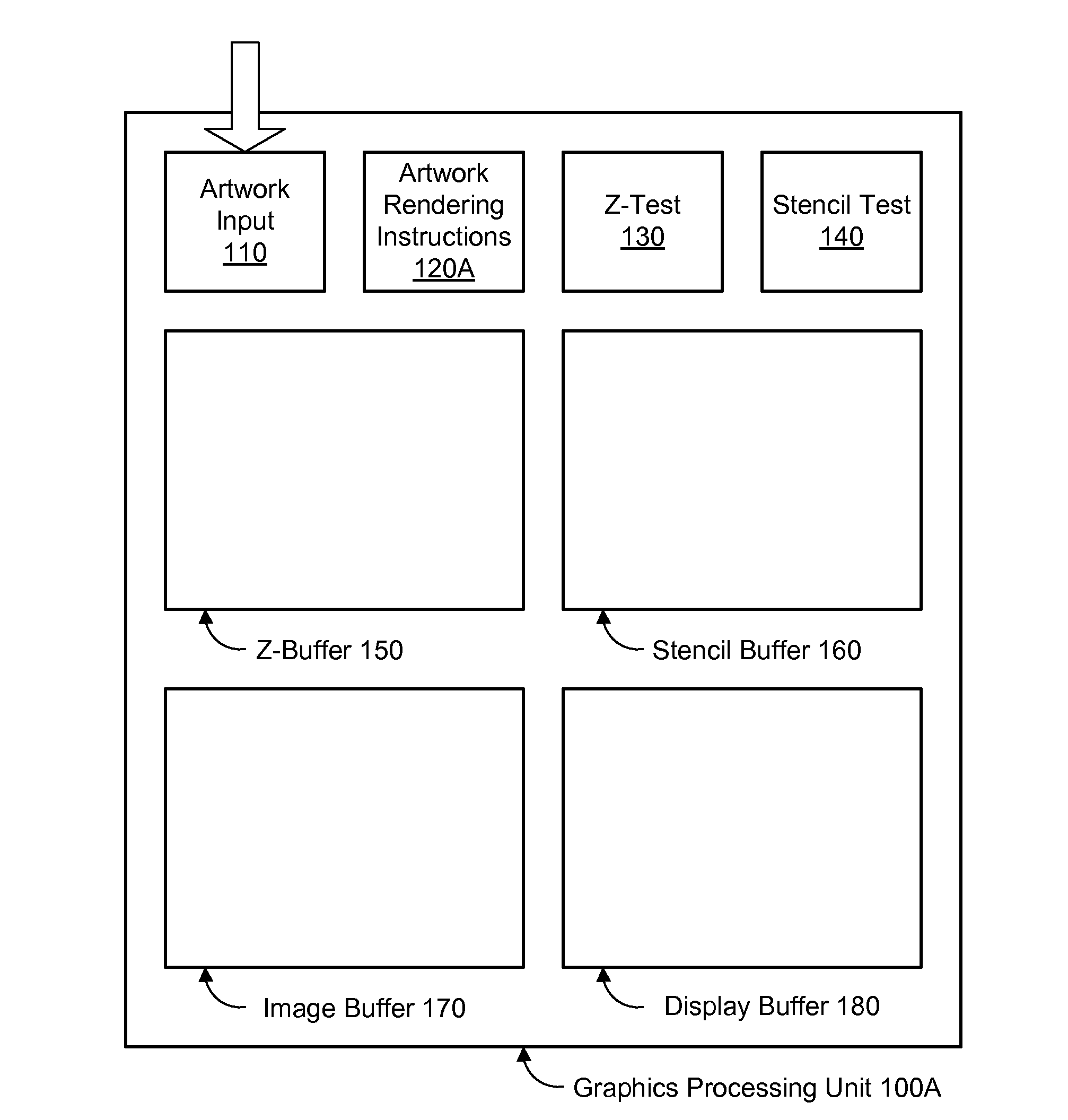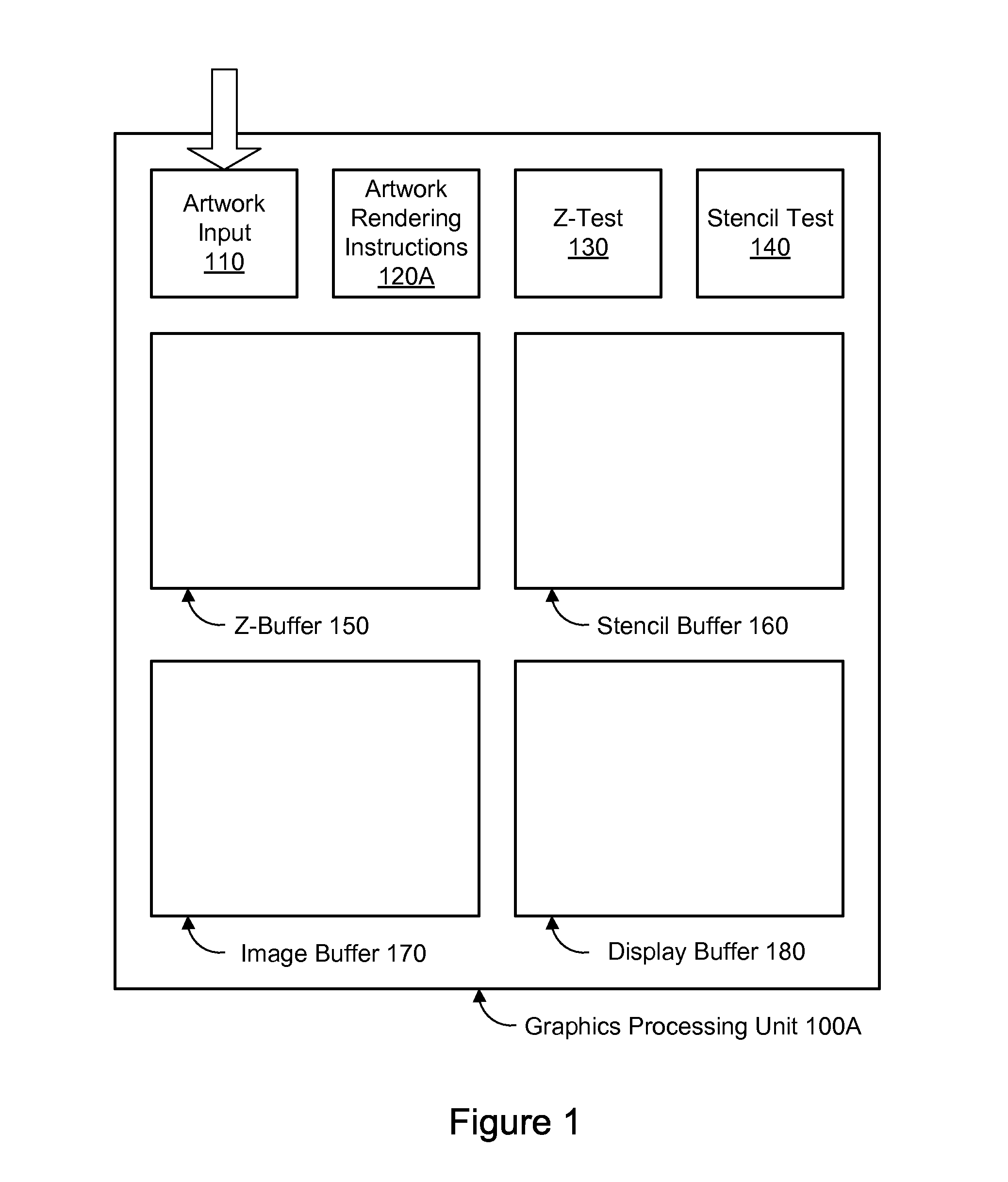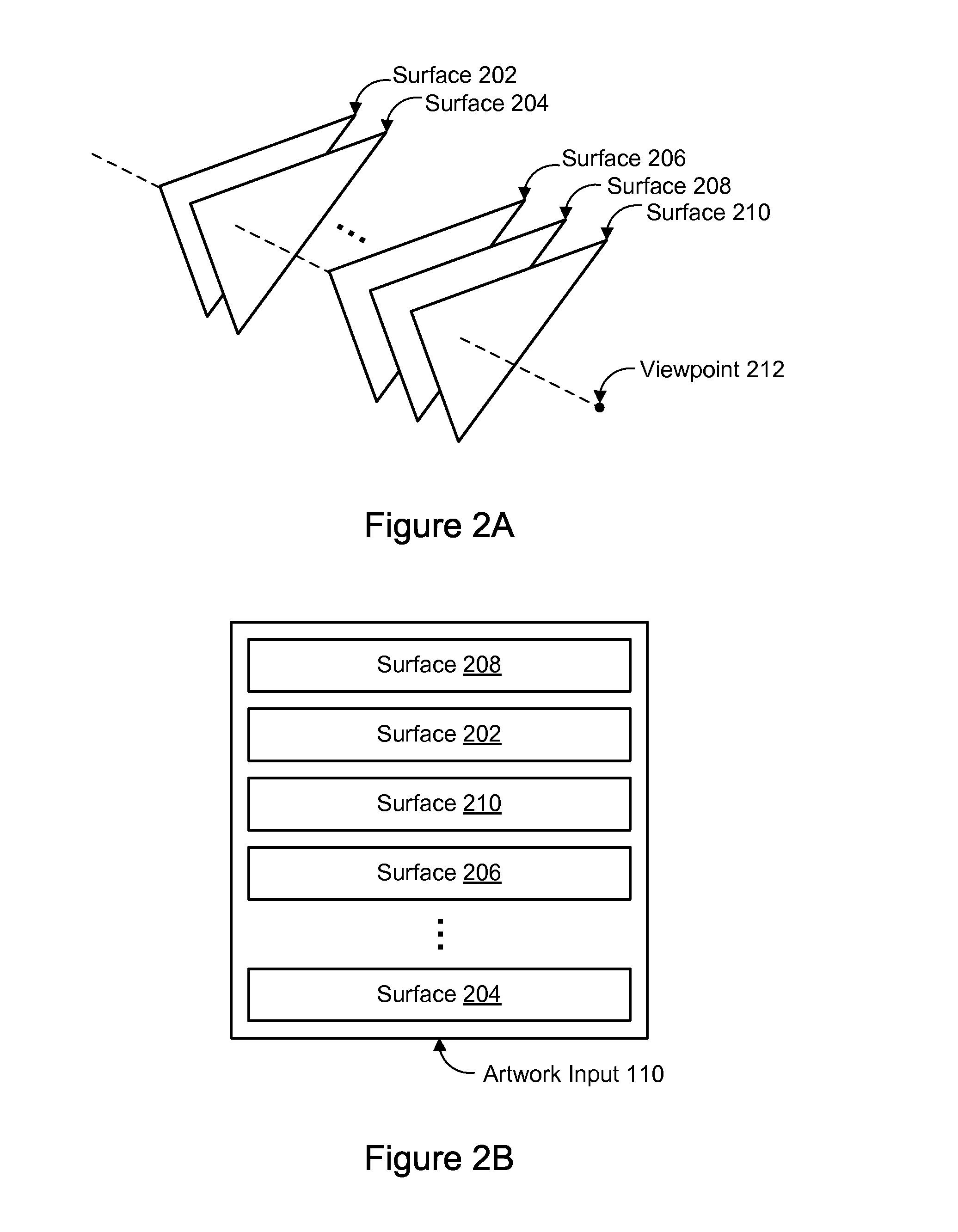Stenciled Layer Peeling Graphics Processing
a technology of graphics processing and peeling layers, applied in the field of computer systems, can solve the problems of hidden surface removal, increased complexity of personal computer systems, and increased complexity of graphics operations and graphical data
- Summary
- Abstract
- Description
- Claims
- Application Information
AI Technical Summary
Benefits of technology
Problems solved by technology
Method used
Image
Examples
Embodiment Construction
[0029]Using embodiments of the systems and methods described herein, an instance of computer graphics artwork (referred to herein as “an artwork”) comprising a plurality of semi-transparent surfaces may be partially rendered in an efficient manner using Stenciled Layer Peeling techniques. Stenciled Layer Peeling may be used to render the two nearest semi-transparent surfaces along with the nearest opaque surface. In one embodiment, full-screen anti-aliasing (e.g., using multi-sampling hardware) may be used during the rendering of surfaces with Stenciled Layer Peeling.
[0030]In the following detailed description, numerous specific details are set forth to provide a thorough understanding of claimed subject matter. However, it will be understood by a person of ordinary skill in the art in light of this specification that claimed subject matter may be practiced without necessarily being limited to these specific details. In some instances, methods, apparatuses or systems that would be k...
PUM
 Login to View More
Login to View More Abstract
Description
Claims
Application Information
 Login to View More
Login to View More - R&D
- Intellectual Property
- Life Sciences
- Materials
- Tech Scout
- Unparalleled Data Quality
- Higher Quality Content
- 60% Fewer Hallucinations
Browse by: Latest US Patents, China's latest patents, Technical Efficacy Thesaurus, Application Domain, Technology Topic, Popular Technical Reports.
© 2025 PatSnap. All rights reserved.Legal|Privacy policy|Modern Slavery Act Transparency Statement|Sitemap|About US| Contact US: help@patsnap.com



